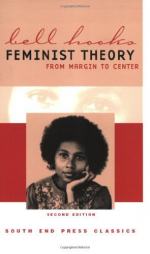
|
| Name: _________________________ | Period: ___________________ |
This quiz consists of 5 multiple choice and 5 short answer questions through Chapters 8 and 9.
Multiple Choice Questions
1. In the first chapter, how does the author characterize the perspective of the women involved in the early feminist movement?
(a) They thought working women were not true feminists.
(b) They saw all women as oppressed but had no real awareness of the life of a non-white, non-middle class women.
(c) Their perspective is difficult to pin down since they were from many different social backgrounds.
(d) They were overly concerned with saving poor women.
2. In Chapter 1, the author states that feminist theory and the feminist movement were originally shaped by which type of people?
(a) Middle-class white women.
(b) Expatriates living abroad.
(c) Working-class women.
(d) Middle-class women.
3. What is the author's opinion about the two different groups and how they function?
(a) Both are necessary to the movement.
(b) They should learn to stand i the other groups shoes.
(c) One is more necessary to the movement than the other.
(d) They need to take turns being in charge.
4. What observations does the author make about women and the practice of violence?
(a) Women also have a capacity for violence and many condone and advocate war.
(b) Women are actually more violent than men.
(c) Women are more violent as teenagers.
(d) Women are essentially nonviolent by nature.
5. How does the author present education in the title of Chapter Eight
(a) As a dilemma.
(b) As a feminist agenda.
(c) As a teen agenda.
(d) As as a class agenda.
Short Answer Questions
1. What has desensitized women and men to violence in the author's view?
2. Who must be retrained in order for the feminist movement to be successful?
3. How does the author describe feminism in the U.S.?
4. What assertion does the author make (once again) about who benefits from the current feminist movement?
5. The author cites Lillian Hellman's autobiography as an example of what kind of phenomenon?
|
This section contains 425 words (approx. 2 pages at 300 words per page) |

|




